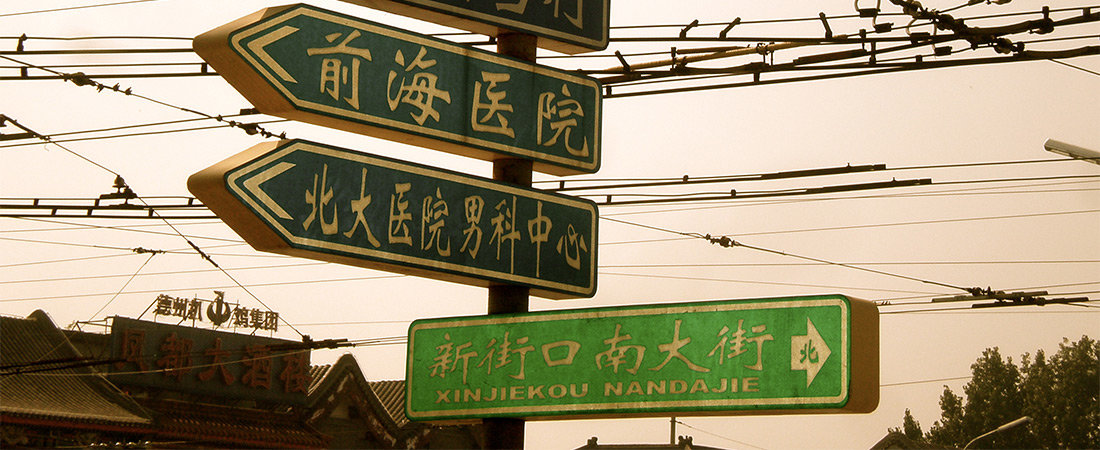The loudspeaker calls on passengers to board flights to Chengdu and Guangzhou. Outside shops selling duty-free Chunghwa brand cigarettes, a group of workmen are squatting to eat noodles for their lunch-break. In the security line, a businessman is giving instructions on his mobile in accented Mandarin. But he is from Burundi, and this is Addis Ababa airport in 2017.
Ethiopia is one of the most pronounced examples of where the Chinese century is already upon us. It will impact on everything; not least the media. To understand media in the 21st Century, we will all, at least figuratively, need to learn Chinese.
Traditional media are already feeling the shift. The international re-launch of CGTN – China Global Television Network – marks a turning point in international broadcast journalism.
The network, still known within China as CCTV, is expanding its international presence. With journalists in more than 70 countries, production centres in Beijing and Washington will be joined by new studios in London and Nairobi later this year.
Telling China’s story
Chinese journalists trace their origins to the Dibao – the gazettes of imperial China. Historically, the media were civil servants, assuming the role of teachers and moralists for the state. This legacy remains today.
President Xi Jinping has urged the network to “tell China’s story well, spread China’s voice well, let the world know a three-dimensional, colourful China, and showcase China’s role as a builder of world peace.
Chinese media remains constrained. Yet the tendency to dismiss it as pure propaganda underestimates its sophistication.
The state administration for media, SAPPRFT, is tasked with the supervision of China’s television, radio and film industries. It promotes themes within the world’s largest media system, such as the ‘Chinese dream’ and the ‘peaceful rise’. However, an unruly freedom exists within the ‘birdcage’ of SAPPRFT’s directives.
From the exposé of the Henan AIDS epidemic, to the Chenzhou mass corruption case, some of China’s largest scandals in recent years have been uncovered as a result of ferocious investigative journalism. In contrast to the adversarial Western ‘muckraking’ model, this so-called ‘watchdog journalism’ works closely with the government, who recognise the media as a force to be negotiated with rather than necessarily controlled.
Changing direction: East to West
As China continues its expansion across the international media landscape, some of the principles of Chinese journalism are also being reflected back in the Western media.
SAPPRFT has long encouraged what it calls ‘constructive journalism’. Better known in the West as ‘solutions-focused journalism’, it is the idea that journalists should move beyond the distorted world-view presented by breaking news, and focus on what is working in the world. The BBC explicitly endorsed this positive approach in 2016. New BBC World Service programmes, such as ‘My Perfect Country’, are aiming to solve common problems in countries around the world.
Despite progress, some Western coverage of China itself is still two-dimensional, at best. For example, much of the reporting on the recent ‘One Belt, One Road’ Forum in Beijing recycled decade-old arguments on Chinese neo-colonialism in Africa.
Some in the West have tried harder than others to get to grips with this evolving landscape. In 2014, Mark Zuckerberg conducted a 30 minute Q&A session at Tsinghua University in fluent Mandarin; much to the delight of China’s engaged netizens.
Many of the disruptive ideas emerging in China’s ‘new media’ are world leading – a different kind of innovation thrives behind the ‘Great Firewall’. Zuckerberg is not only picking up vocabulary on his visits to Beijing. Some of Facebook and WhatsApp’s new features are lessons from ubiquitous Chinese platforms such as WeChat and Sino Weibo.
Soft Power
This transformational shift is only just getting started. In 2016, China moved up two places in Portland’s SoftPower 30 – a ranking of countries’ soft power, based on a composite index measuring engagement, culture, government, education, digital and enterprise.
As China continues to invest in its soft power assets, we can expect the country to rise further up the ranks. Its media will be a key part of this. As the driver of a new era of globalisation, international norms in media and reporting will continue to flow from East to West. Businesses and governments will need to learn Chinese. And learn fast.

